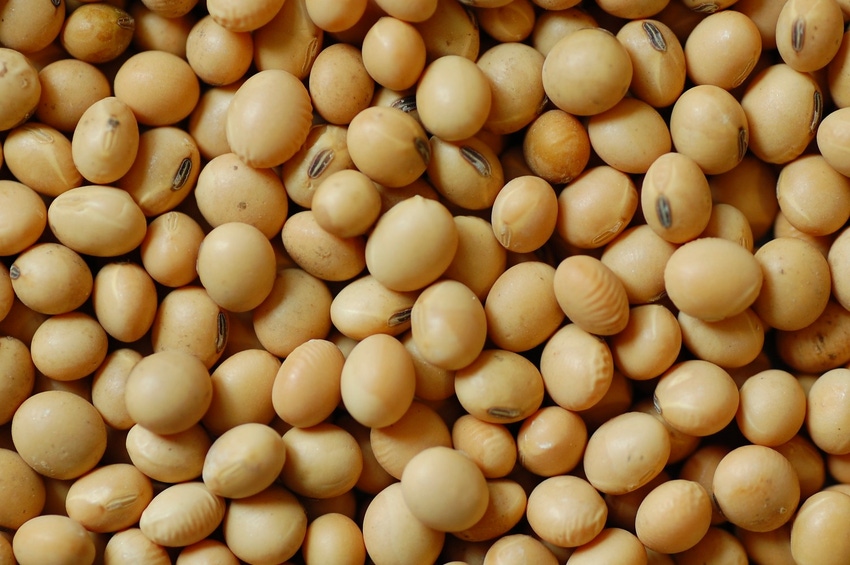January 17, 2019

By Todd Hubbs, University of Illinois Extension
Soybean prices rallied and then fell last week on developments in trade negotiations with China and the emergence of issues with the crop in South America. Considerable uncertainty surrounds both of these matters and is set to continue as we move into 2019. The development of soybean prices over the next year depends on how both of these issues get resolved.
Dry conditions in Brazil contributed heavily to the recent rally in soybean prices. After a strong start to the growing season, dry weather in some major growing regions in Brazil led to numerous projections of a drastically lower soybean production total. The release of the January projections by CONAB, the Brazilian agricultural statistics agency, took the air out of much of this speculation. At 118.8 million metric tons (MMT) (4.36 billion bushels), CONAB’s projection came in higher than market observers expected. USDA’s current projection sits at 122 MMT (4.48 billion bushels) and, when the next world production report is released, lower production forecasts for Brazil appear likely. Over the last ten years, USDA final estimates of the Brazilian soybean crop came in on average 0.73 percent higher than CONAB estimates. If the statistical relationship held to form this year, a production level near 119.6 MMT (4.39 billion bushels) is possible when the world production report from the USDA is released.
The potential for further deterioration in the Brazilian crop is feasible considering some of the major growing areas currently suffer from dry conditions. Numerous market advisors place Brazilian production below 116 MMT (4.26 billion bushels). Mato Grosso, Parana, Rio Grande do Sul, and Mato Grosso do Sul comprise slightly over 66 percent of the planted acreage this year according to CONAB, and all currently suffer from dryness in some regions. Yield forecasts for Mato Grosso do Sul came in down almost six bushels per acre from last year. Areas in the Southern region of Brazil (Parana, Santa Catarina, and Rio Grande do Sul) show yield increases over last year in the latest CONAB projections and leave plenty of room for downside speculation on the crop.
Argentina received excess rain over the last month which delayed planting in some areas and may call for replanting on some acreage. The USDA currently projects Argentine soybean production at 55.5 MMT (2.04 billion bushels). Recent reports from the region set Argentine production slightly below the USDA figure. At near 52.2 MMT (1.92 billion bushels), the low projections still sit well above last year’s drought-plagued 37.8 MMT (1.39 billion bushels) production level. By using the CONAB forecast for Brazil and low-end projections for Argentina, soybean production in both countries looks set to outpace last year’s level by 474 million bushels. While the potential for continued deterioration of the crop is feasible, a significant reduction in the range of 12-13 MMT (441 – 478 million bushels) is necessary to match last year’s production levels. A production loss of that magnitude looks unlikely under current conditions, but the potential for the loss of another 4-6 MMT (147-220 million bushels) exists.
Developments in trade negotiations with China over the last week provided some support for a resolution. If a settlement is reached, any agreement appears set to possess guarantees of purchases of soybeans. The questions remain whether these purchases exceed what would usually be bought by China and when these purchases would be enacted. Right now, the most likely scenario involves an extension of trade talks past the March 1 deadline and a continuation of the current export scenario. China raised their soybean import projection to 87 MMT (3.2 billion bushels). While promising, this figure sits below the current USDA forecast of 90 MMT (3.31 billion bushels).
Soybean export calculations thus far in the marketing year use USDA weekly export inspection reports and Census Bureau export estimates. The USDA’s weekly export inspections report shows that cumulative marketing year inspections attained 676 million bushels by January 10, trailing last year’s total by 458 million bushels. Through the first two months of the year, cumulative Census export estimates exceeded inspections by 17.8 million bushels. If that margin persisted through the current period, cumulative exports reached 694 million bushels this marketing year. While China purchased some U.S. soybeans after the G-20 summit, the totals thus far place sales in the 5-6 MMT (184-220 million bushels) range. These sales came in below expectations and paled in comparison to regular sales to China. Export inspections this marketing year averaged 35.45 million bushels a week. This pace is slightly below the 36.5 million bushel per week pace necessary to meet the USDA marketing year projection of 1.9 billion bushels.
Despite the reduced potential of the South American crop, world ending stocks under current scenarios are set to total near 3.9 billion bushels, up from last year’s 3.7 billion bushels. Ending stocks at this level place world stocks to use near 30 percent. A continuation of deteriorating crop conditions in South America and the resolution to the trade dispute would bring price support. For now, the uncertainty looks to continue.
YouTube Video: Discussion and graphs associated with this article
Recommended citation format: Hubbs, T. "Soybean Price Uncertainty." farmdoc daily (9):6, Department of Agricultural and Consumer Economics, University of Illinois at Urbana-Champaign, January 14, 2019.
Source: University of Illinois, which is solely responsible for the information provided and is wholly owned by the source. Informa Business Media and all its subsidiaries are not responsible for any of the content contained in this information asset.
You May Also Like




